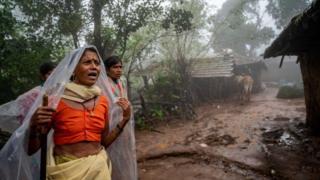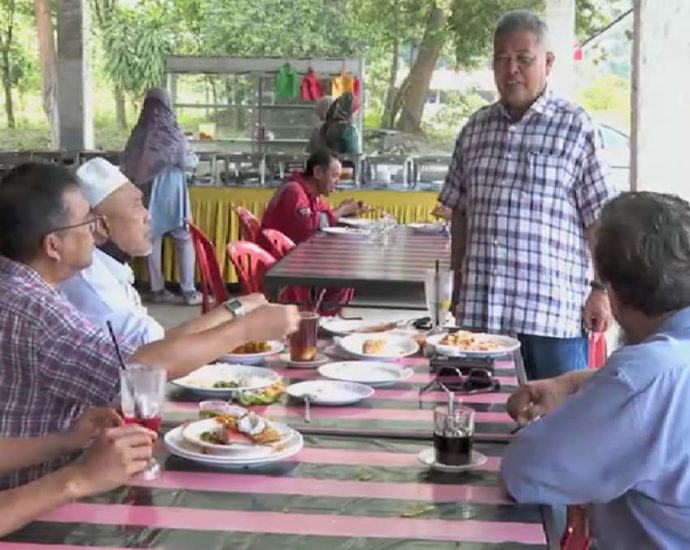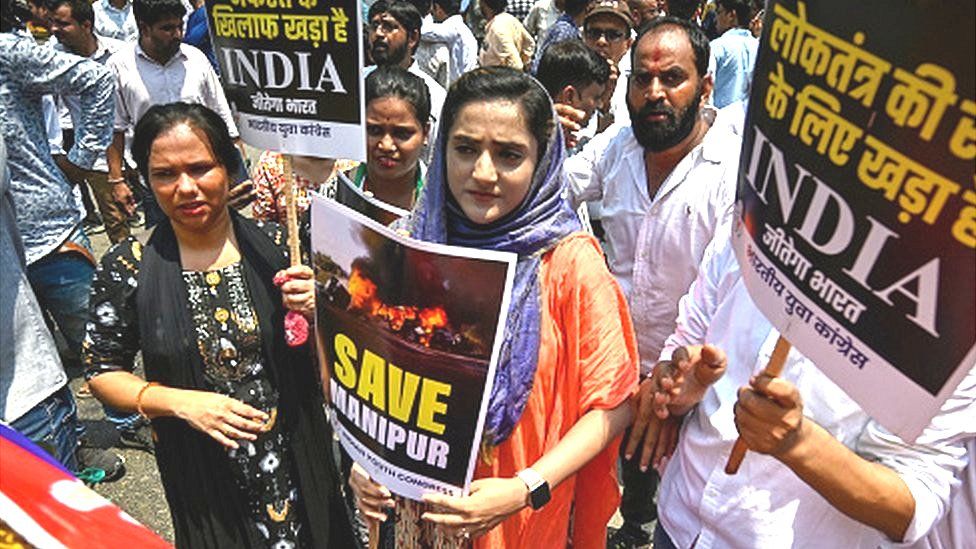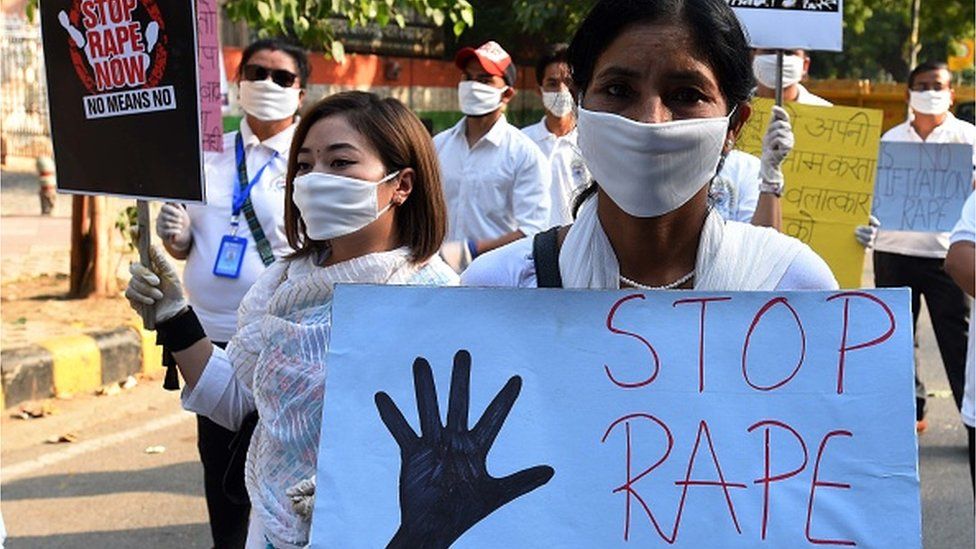Opinion: Amidst disaster, adapting for a more resilient Asia-Pacific
The world faces escalating natural disasters, yet nowhere is the threat more immediate than in Asia and the Pacific. Ours is a region where climate change-induced disasters are becoming more frequent and intense.
Since 1970, 2 million people have lost their lives to disasters. Tragically, but all too predictably, the poorest in the least-developed countries are worst-affected. They will find themselves in the eye of the storm as temperatures rise, new disaster hotspots appear and existing risks increase. Unless we fundamentally change our approach to building resilience to disaster risk, temperature rises of 1.5°C or 2°C will make adaptation to the threat of disasters unfeasible. Disaster risk could soon outpace resilience in Asia and the Pacific.
It is worth pondering what this would mean. The grim tally of disaster-related deaths would inevitably rise, as would the annual cost of disaster-related losses, forecast to increase to almost $1 trillion, or 3% of regional GDP, under 2°C warming up from $924 billion today, or 2.9% of regional GDP. The deadly combination of disasters and extreme weather would undermine productivity and imperil sustainable development.
In the poorest parts of our region, such as the Pacific small island developing states, disasters would become a major driver of inequality.
Losses would be particularly devastating in the agriculture and energy sectors, disrupting food systems and undermining food security as well as jeopardizing energy supply and production. Environmental degradation and biodiversity loss would be remorseless, leading to climate change-driven extinctions and further increasing disaster risk.

To avoid this exponential growth of disaster risk, there is a narrow window of opportunity to increase resilience and protect hard-won development gains. To seize it, bold decisions are needed to deliver transformative adaptation. They can no longer be postponed.
This week, the UN Economic and Social Commission for Asia and the Pacific (ESCAP) is convening top policymakers, experts and academics from across the region on 25-27 July to discuss transformative adaptation policies and actions at ESCAP’s Committee on Disaster Risk Reduction. The Asia-Pacific Disaster Report 2023 will also be launched at the Committee.
The stakeholders drawn to this meeting will consider key questions such as prioritizing greater investment in early warning systems.
Expanding coverage in least developed countries is the most effective way to reduce the number of people killed. Early warning systems can shield people living in multi-hazard hotspots and reduce disaster losses everywhere by up to 60%. They provide a tenfold return on investment. To protect food systems and reduce the exposure of the energy infrastructure – the backbone of our economies – sector-specific coverage is needed.
Investments at the local level to improve communities’ response to early warning alerts, delivered through expanded global satellite data use and embedded in comprehensive risk management policies, must all be part of our approach.
Only transformative adaptation can deliver the systemic change needed to leave no one behind.
Armida Salsiah Alisjahbana
Nature-based solutions should be at the heart of adaptation strategies. They support the sustainable management, protection and restoration of degraded environments while reducing disaster risk. The evidence is unequivocal: preserving functional ecosystems in good ecological condition strengthens disaster risk reduction. This means preserving wetlands, flood plains and forests to guard against natural hazards, and mangroves and coral reefs to reduce coastal flooding.
Forest restoration and sustainable agriculture are essential. In our urban centers, nature-based solutions can mitigate urban flooding and contribute to future urban resilience, including by reducing heat island effects.
Beyond these priorities, only transformative adaptation can deliver the systemic change needed to leave no one behind in multi-hazard risk hotspots. Such change will cut across policy areas. It means aligning social protection and climate change interventions to enable poor and climate-vulnerable households to adapt and protect their assets and livelihoods.
Disaster risk reduction and climate change adaptation must become complementary to make food and energy systems more resilient, particularly in disaster-prone arid areas and coastlines. Technologies such as the ‘Internet of Things’ and artificial intelligence can improve the accuracy of real-time weather predictions as well as how disaster warnings are communicated.
Yet to make this happen, disaster risk financing needs to be dramatically increased, with financing mechanisms scaled up. In a constrained fiscal context, we must remember that investments made upstream are far more cost-effective than spending after a disaster.
The current level of adaptation finance falls well short of the $144.74 billion needed for transformative adaptation. We must tap innovative financing mechanisms to close the gap. Thematic bonds, debt for adaptation and ecosystem adaptation finance can help attract private investment, reduce risk and create new markets. These instruments should complement official development assistance, while digital technologies improve the efficiency, transparency and accessibility of adaptation financing.
Now is the time to work together, to build on innovation and scientific breakthroughs to accelerate transformative adaptation across the region.
A regional strategy that supports early warnings for all is needed to strengthen cooperation through the well-established United Nations mechanisms and in partnership with subregional intergovernmental organizations. At ESCAP, we stand ready to support this process every step of the way because sharing best practices and pooling resources can improve our region’s collective resilience and response to climate-related hazards.
The 2030 Agenda for Sustainable Development can only be achieved if we ensure disaster resilience is never outpaced by disaster risk. Let us seize the moment and protect our future in Asia and the Pacific.
Armida Salsiah Alisjahbana is the under-secretary-general of the UN and executive secretary of the UN Economic and Social Commission for Asia and the Pacific (ESCAP).
Raigad: Dozens still missing as India landslide search called off
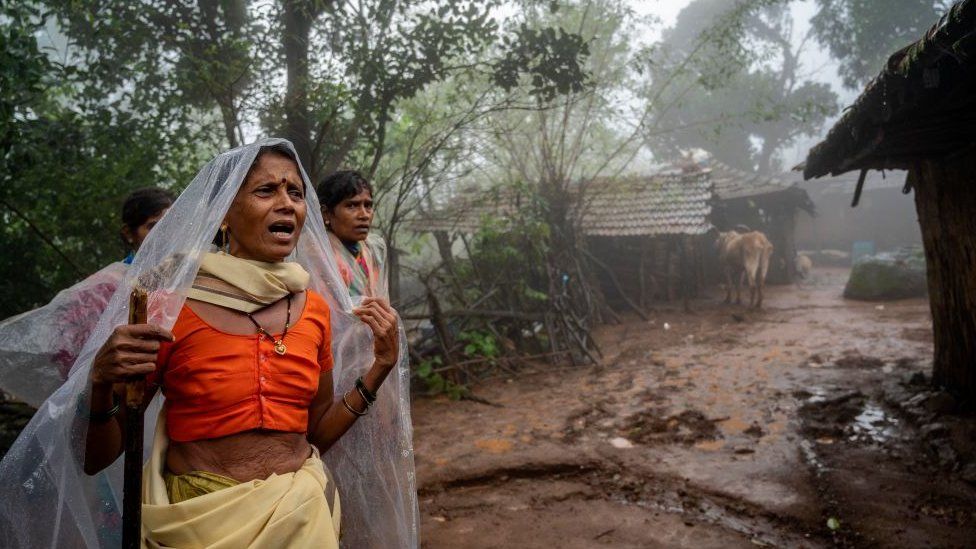 Getty Images
Getty ImagesIndian authorities have called off efforts to find survivors four days after a deadly landslide hit a village in the western state of Maharashtra.
Twenty-seven bodies were found while 57 people are still missing after the landslide, which occurred in Irshalwadi village in Raigad district.
Rescue efforts were hindered by the tough terrain and heavy rain.
The decision was taken after talking to the Raigad administration and other authorities, a state minister said.
The landslide, which took place on Wednesday night, flattened several homes in the village, which is located halfway up the slope of a steep mountain called Irshalgad.
The mountain range, which is part of the Deccan Traps (a volcanic province), was formed over 60 million years ago, says Janhavee Moole from BBC Marathi.
“It’s difficult to reach and the terrain is considered risky even for seasoned trekkers,” she says.
Rescue operations were complicated by the terrain – which was slippery due to ongoing rains – as well as due to the fact that mud was continuing to fall on the teams.
“Rescuers had to climb for about two hours to reach the spot every morning. By the second day, rescuers and locals had realised that it would be difficult to continue the operation for longer,” Moole says.
Officials said last week that much of the mud had to be cleared manually as it was hard for heavy machines such as JCBs to reach the spot.
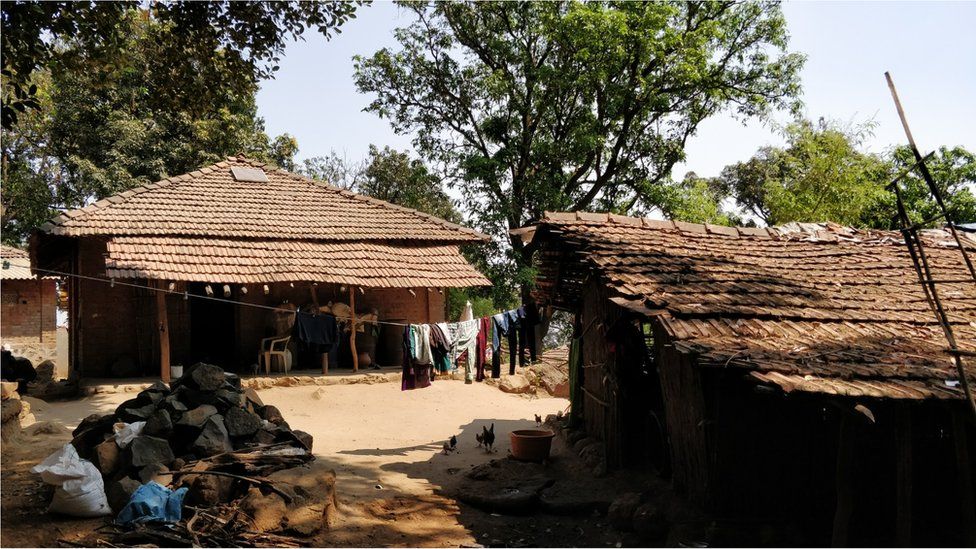
Several states in India have experienced heavy rainfall over the past few weeks, triggering floods and landslides. India’s weather department has predicted more rains in parts of Maharashtra state, including Raigad district, where schools were closed on Monday.
According to government data, there were 43 houses in the village, where 228 people lived. Around 144 people have either been rescued or were away from Irshalwadi at the time of the disaster.
Locals and people involved in rescue efforts told BBC Marathi that only around four to five houses are still standing in the village.
The people in the village belonged to an indigenous tribe and made a living by foraging in the forest and some agricultural activities, says Moole, who grew up near the area.
She spoke to mountaineers who often climbed the Irshalgad mountain and remember the village and its inhabitants fondly.
Santosh Dagade, who has climbed Mount Everest, said he often trekked up Irshalgad and was served tea and snacks by the villagers. After the news of the landslide, he went to help and found that except for a few houses, “the entire village was buried under the ground”.
“I couldn’t believe my eyes. I started trying to find familiar houses. There was despair everywhere,” he told Moole.
Survivors are currently staying in temporary shelters nearby.
A woman who survived the landslide told BBC Marathi that she was sleeping when the landslide hit.
“We woke up when our mother screamed. When we ran outside there was no one there. The entire village was covered in mud,” she said.
With all their possessions and documents buried under the mud, she said the biggest question they are facing is what to do next.
BBC News India is now on YouTube. Click here to subscribe and watch our documentaries, explainers and features.

Read more India stories from the BBC:

Related Topics
Police officer who alleged workplace bullying before death offered help for ‘substantial’ work challenges: SPF
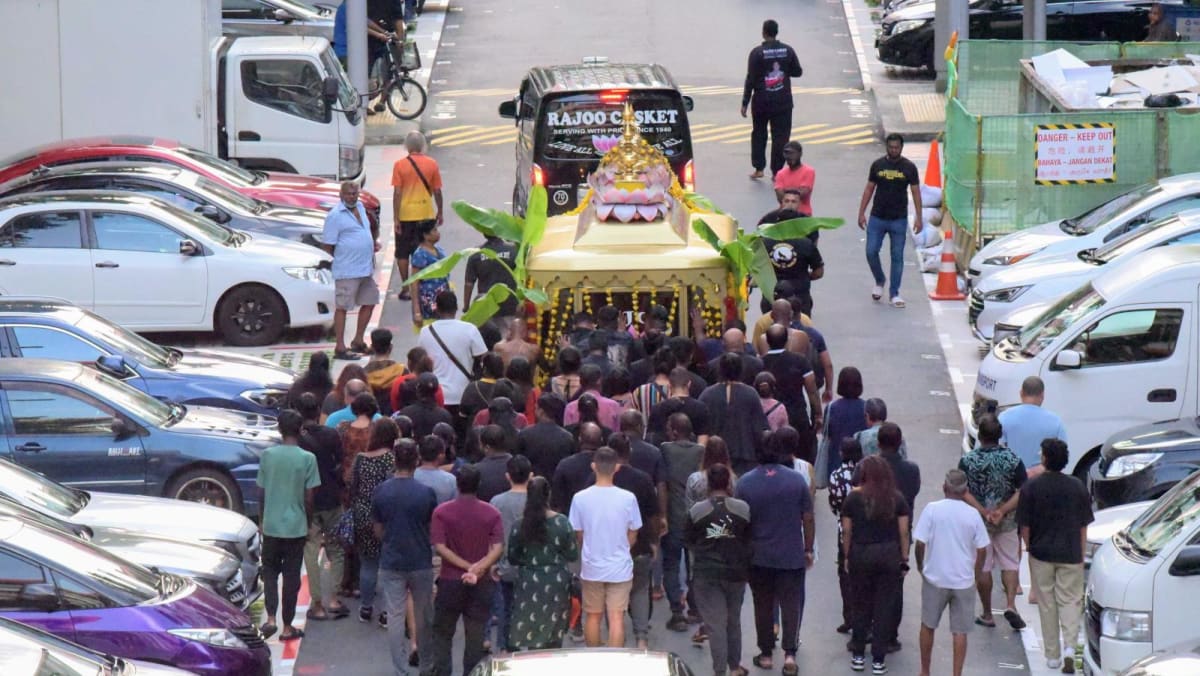
SINGAPORE: A police officer who made allegations of racism and workplace bullying before he died had faced “substantial challenges at work”, for which his superiors had offered help, the Singapore Police Force said on Monday (Jul 24).
Sergeant Uvaraja Gopal, 35, died in hospital on Friday evening after he was found lying motionless at the foot of a Housing Board block in Yishun. The police do not suspect foul play.
In a Facebook post that was later removed, SGT Uvaraja said he had been bullied by his superiors and subjected to ethnic slurs by his teammates – claims that Home Affairs Minister K Shanmugam said on Friday that the police would investigate thoroughly.
Addressing the claims of racial discrimination, SPF said SGT Uvaraja had made allegations back in 2015, adding that these were looked into and found to be unsubstantiated.
SGT Uvaraja had served with the police for more than 10 years and was last an officer with Ang Mo Kio Police Division.
“At this point, we can set out only the known facts, as not all the relevant facts have been established. It is also inappropriate for the police to make any comments, or come to any conclusions, pending detailed investigations,” the police said on Monday.
CLARIFICATIONS BY THE POLICE
The police said the sergeant had made a number of complaints against his superiors and peers over the years, and that all of these have been investigated and dealt with.
“Some of them are being investigated again, in the light of the allegations which he had made just prior to his passing away,” said SPF.
SPF said the officer was provided coaching to address his performance issues and that he was given transfers, at his request, to six work units in nine years.
At his request, the officer was also granted additional leave since 2015 beyond his usual entitlements.
For example, he was at work for fewer than 30 days last year, as he was on various types of leave, including extended sick leave, unrecorded leave, and no pay leave. In 2023, he had been at work for fewer than 25 days, for similar reasons.
Police officer who alleged workplace bullying before death was offered help for ‘substantial’ work challenges: SPF

SINGAPORE: A police officer who made allegations of racism and workplace bullying before he died had faced “substantial challenges at work”, for which his superiors had offered help, the Singapore Police Force (SPF) said on Monday (Jul 24).
Sergeant Uvaraja Gopal, 35, died in hospital on Friday evening after he was found lying motionless at the foot of a Housing Board block in Yishun. The police do not suspect foul play.
In a Facebook post that was later removed, SGT Uvaraja said he had been bullied by his superiors and subjected to ethnic slurs by his teammates – claims that Home Affairs Minister K Shanmugam said on Friday that the police would investigate thoroughly.
Addressing the claims of racial discrimination, SPF said on Monday that SGT Uvaraja had made allegations back in 2015, adding that these were looked into and found to be unsubstantiated.
On the complaints that he made against his superiors and peers over the years, SPF said they had been investigated and dealt with. But some of them are being investigated again in light of his latest allegations.
SGT Uvaraja had served with the police for more than 10 years and was last an officer with Ang Mo Kio Police Division.
“At this point, we can set out only the known facts, as not all the relevant facts have been established. It is also inappropriate for the police to make any comments, or come to any conclusions, pending detailed investigations,” the police said on Monday.
CHALLENGES FACED AT WORK
SPF said that SGT Uvaraja’s superiors had assessed that he was facing “substantial challenges at work” and tried to help him in a number of ways.
These included coaching to address his performance issues. He was also granted transfers, at his request, to six different work units in nine years.
SPF said he was also granted additional leave since 2015 beyond his usual entitlements.
For example, he was at work for fewer than 30 days last year as he was on various types of leave, including extended sick leave, unrecorded leave and no pay leave. In 2023, he had been at work for fewer than 25 days, for similar reasons.
His supervisors had arranged for counselling and “psychological assistance” for him at various points in his service from 2016, said SPF.
In January this year, he was assigned a para-counsellor after he reported experiencing work stress.
On Feb 16, he reported to a new unit – following his request for a transfer – and “showed signs of being unstable”, said SPF.
“He was counselled by a para-counsellor on the same day, and later attended to by a psychologist from the Police Psychological Services Department. Due to safety concerns, he was relieved from carrying firearms from Feb 16, 2023.”
Will Terengganu stick to Islamic party PAS and the green wave, or give UMNO and the unity government a chance?

Yet, in Terengganu’s legislative assembly, before the dissolution of the House, PN held 22 seats, while the Barisan Nasional (BN) held 10.
Both sides of the political divide are now gearing up to secure victory in the state polls.
CONFIDENCE RUNNING HIGH AMONG PN LEADERS
Confidence is running high among PN leaders in Terengganu as they ride on the momentum of the green wave, a term associated with the coalition’s remarkable performance in the east coast.
“The momentum and support from the people has only gotten stronger,” said PN’s Terengganu election director Ariffin Deraman.
“The green wave is getting stronger because we see the weakness of the federal government today. Until today, we have not seen any help or benefit specifically for Terengganu. This green wave is not just in Terengganu, it’s everywhere in Malaysia.”
Myanmar maid abused to death was so emaciated her muscles had wasted away

BMI OF SOMEONE WITH ADVANCED CANCER
Dr Paul conducted the autopsy of Ms Piang Ngaih Don on Jul 27, 2016, the day after she was found dead in her employer’s flat by the family’s doctor.
“The deceased was very emaciated, with hardly any flesh on her cheek, on her face, and a scrawny neck, with her collarbones all sticking out,” said Dr Paul.
If she had been starved further, she could have suffered changes in consciousness, multi-organ failure and eventually death. he said.
“In a very crude sense, the body would start digesting itself to sustain (itself),” said Dr Paul.
The victim was 145cm tall and weighed 39kg in April 2015, just before she started working for the family.
After she died, her weight including the body bag was 24kg.
Her body mass index had dropped from about 18.3 to 11.26 over 10 months.
“If you notice such a drop has taken place, you’d suspect the person to be either suffering from advanced cancer, or extensive widespread tuberculosis involving not just lungs but other organs,” said Dr Paul. “And you’d expect this person’s life to be threatened.”
He had ruled out disease processes after examining the body, leaving the only other possibility to be severe malnourishment.
ABNORMAL STOMACH FINDINGS
He said the examination of the maid’s abdominal space where organs lie also showed some abnormal findings.
“In normal people, there will be, on the wall of the abdomen some fat,” said Dr Paul. “Even the thinnest of people will have some fat. There will be fat surrounding all the organs, for example around the kidney, around the intestines, because this is the body’s way of storing for dire times.”
When a person is unable to have food, the body consumes its own fat. When the fat runs out, the body begins consuming muscle, followed by other structures like brain tissues, said Dr Paul.
In the victim’s case, what was “outstanding” to him was that there was no abdominal wall fat.
He said in response to questions from the defence that it was “very evident that all the fat has been consumed”. There was also some amount of protein loss, as the muscles had wasted.
Ms Piang Ngaih Don’s abdominal area was also filled with water, with edema fluid taking the place where fat cells should be.
Dr Paul said edema usually occurs if an organ is diseased such that the body is unable to maintain its pressure, and fluid leaks out.
Organs which should have been functioning to handle the maid’s food were not doing so, he added. Her intestines were very shrunken and small, her liver appeared pale and with a lot of bile staining, and her gall bladder was distended with thick, concentrated bile and some mucus.
“The basic reason is that either the diet is absent of fat, or there is no diet,” declared the forensic pathologist.
“Normally, I would suspect a very debilitating life-threatening illness. The only other conclusion is – she is severely malnourished,” said Dr Paul.
Questioned on how long the victim might have been malnourished, Dr Paul said it would be at least two or three months if not longer.
The amount of deprivation also had to be very severe and sustained, and it was not the situation of someone who “starved today and fed tomorrow”, he added.
HOW POOR NUTRITION COMPOUNDED A NECK INJURY
Dr Paul said the victim’s poor nutritional state compounded her inability to tolerate the repeated trauma to her neck.
A normal person would have the ability to tense up, to guard and resist any “trauma” or blows when anything happens to their neck, said Dr Paul.
Ms Piang Ngaih Don’s neck would have been “absolutely flaccid”, he added, emphasising that her death was not due to a lack of nutrition but due to her neck injuries.
Dr Paul said that if the victim had been in a normal state of nutrition, he would have “expected much (fewer) effects of the neck injury and the secondary … injury to the brain, which swelled up and caused death”.
The victim had been taken to a clinic for leg swelling in May 2016, a few months before her death. However her abuser declined further tests suggested by the doctor to find out the underlying root cause.
Asked if there was any relation between the leg swelling and weight loss, Dr Paul said there was “very much so”.
A malnourished person’s liver would not be optimally functioning, and this would lead to blood thinning that results in water leaking into the body. The legs will begin to swell as the liquid tends to leak there.
The prosecution showed Dr Paul that the victim ate about 60 meals in the last 35 days of her life. Of these, 19 consisted of bread soaked in water.
Deputy Public Prosecutor Sean Teh asked if this was sufficient nutrition for a person.
Dr Paul said a person working in a house would need at least 1,800 to 2,200 calories per day.
“A slice of bread is not going to give little more than 100 calories,” he said.
The trial continues.
MFP still hopes it can renominate Pita for PM
PUBLISHED : 24 Jul 2023 at 13:39

Election victors Move Forward still hope they can renominate party leader Pita Limjaroenrat for prime minister and that senators will give him enough support.
Secretary-general Chaithawat Tulanon said on Monday that the party has petitioned to the ombudsman to ask the Constitutional Court if Mr Pita can be renominated to parliament for the position of prime minister at the head of a coalition government.
He hoped the renomination would be allowed and there would be enough support from the military appointed senators.
Mr Pita was nominated as the sole prime ministerial candidate at the joint sitting of the 500-stong House of Representatives and the 249 current senators on July 13, but he failed to win a majority vote. His eight-party alliance mustered only 324 votes, well short of the needed 375.
The parliament then voted on July 19 to reject his renomination. Opponents argued that a failed motion could not be resubmitted during the same session of parliament, and that this also applied to Mr Pita’s nomination for prime minister.
After the rejection the Move Forward Party (MFP), which won 151 House seats, agreed to allow the Pheu Thai Party, its largest ally with 141 MPs, to take the lead and nominate a candidate for prime minister. This is expected at a joint sitting on Thursday.
MFP secretary-general Chaithawat said on Monday that he now believed about 56 senators were ready to support MFP’s bid to lead the next government.
He acknowledged that several parties outside the eight-member coalition seemed willing to support Pheu Thai if it excludes MFP from the government. However, Mr Chaithawat said, if the eight-parties remain united there could be a way out.
Leaders of the eight parties were scheduled to meet on Tuesday, he said.
“If Pheu Thai and Move Forward go head and a prime minister is still not elected, society will have many questions for the senators and the other political parties,” Mr Chaithawat said.
He rejected the possibility that parties with only a minority vote in the House could form the next government.

MFP secretary-general Chaithawat Tulanon
Growing concern with youth radicalism, terrorism threat to Singapore remains high: ISD
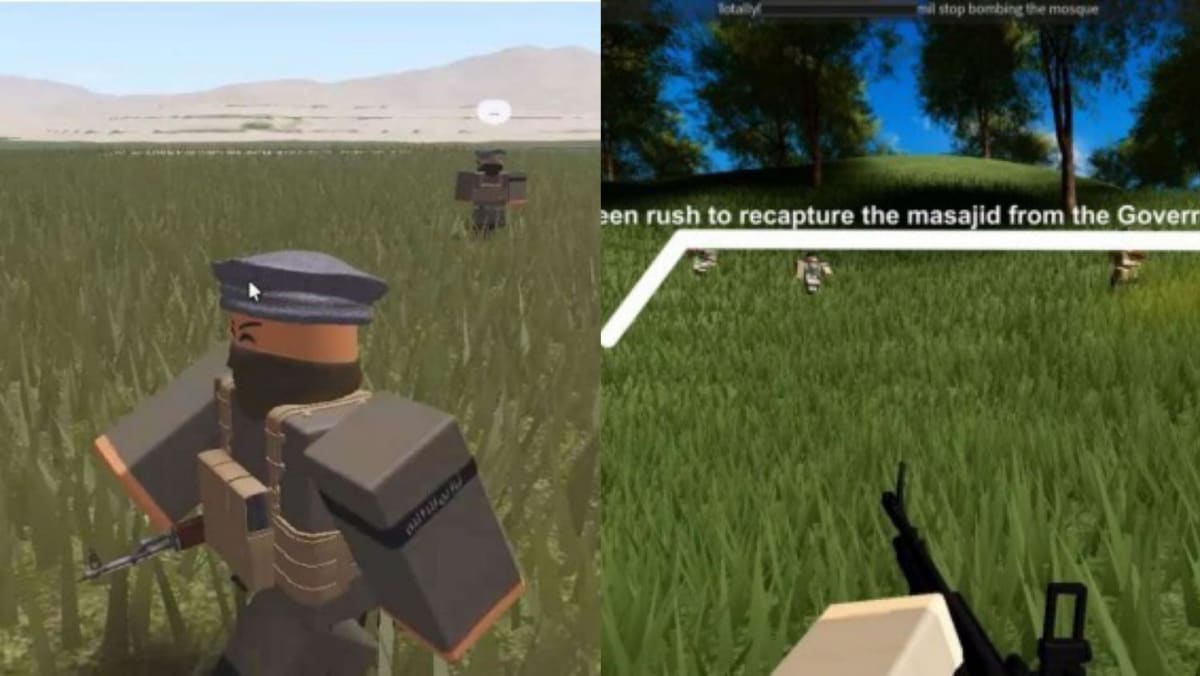
SINGAPORE: There is a growing concern about youth radicalism in Singapore, the Internal Security Department (ISD) said on Monday (Jul 24), highlighting the role of social media and gaming platforms.
The terrorism threat to Singapore remains high, with self-radicalisation online being the primary threat driver, the agency said in its annual terrorism threat assessment report.
Social media and online gaming platforms have enabled like-minded individuals to connect across borders, forming a “virtual caliphate” where they can propagate their support for terrorist groups.
“While the platforms themselves are innocuous, terrorists and extremists have co-opted their features for recruitment and radicalisation. There is a ready source of extremist material on social media, replicated on various online platforms, which are easily accessible,” ISD said in its report.
ISD cited the example of three youths detained in the past year who had come to be acquainted through the same extremist social media channel.
One of them, a 16-year-old student, had joined multiple Islamic State-themed servers on gaming platform Roblox where he got to know other pro-IS gamers. He propagated his support for the extremist group by creating and uploading three propaganda videos on social media, using Roblox game footage.
Another Singaporean student, 15, was arrested in November 2022 for terrorism-related activities, making him the youngest person so far to be dealt with under the Internal Security Act.
He became self-radicalised after listening to podcasts by foreign segregationist preacher Ismail Menk and later considered conducting attacks in Singapore.
In each of the recent ISA cases, the self-radicalised individuals had spent significant amounts of time online consuming sermons of radical preachers, ISD noted in its report.
“Beyond terrorist propaganda, social media also provides easy access to sermons of radical or segregationist foreign preachers, entrenching intolerant views that can serve as a pre-cursor to radicalisation,” it added.
Since 2015, a total of 11 self-radicalised Singaporeans aged 20 and below have been dealt with under the ISA.
The agency noted that five of these youths had plans to carry out attacks in Singapore using easily accessible weapons.
Manipur video: US expresses concern after women paraded naked in India
 Getty Images
Getty ImagesThe US has expressed concern over reports of a video that showed two women being paraded naked in the north-eastern Indian state of Manipur.
The assault on the women took place almost three months ago but became public last week after the video went viral, sparking global outrage.
A US spokesperson called the incident “brutal” and “terrible”, Reuters reported.
India is yet to comment on the statement.
But earlier this month, the Indian government had responded sharply after a US official said that his country was “ready to assist” in resolving the crisis in Manipur.
Foreign ministry spokesperson Arindam Bagchi said that he had not seen the comments, made by US ambassador Eric Garcetti, personally but that foreign diplomats usually did not comment on India’s “internal developments”.
Tensions have escalated in Manipur where ethnic clashes between the majority Meitei group and the tribal Kuki minority have killed more than 130 people and displaced nearly 60,000 since May.
The video, which was first circulated on Thursday, shows two Kuki women being pushed around and groped by a mob from a village dominated by Meiteis.
It sparked widespread outrage and condemnation, leading to the arrest of six men. According to a police complaint, one of the women was gang raped. The complaint added that a third woman was also forced to strip but she is not seen in the video.
Questions are being raised about why it took police so long to act – the complaint had been lodged just days after the incident and many of the men are clearly identifiable in the footage.
Last week, opposition lawmakers disrupted parliament’s monsoon session in capital Delhi, demanding a debate on the situation in Manipur.
They have also demanded that Prime Minister Narendra Modi address the issue in parliament – and are set to hold a protest outside the parliament on Monday over this.
After the video went viral, Mr Modi condemned the assault as “shameful” and promised tough action.
Protests have also erupted in Manipur, where thousands gathered over the weekend demanding the arrest of men involved in the assault.
There have also been reports of Meities living in the neighbouring Mizoram state leaving for Manipur and Assam state after an organisation of former insurgents issued a “warning” about their safety.
However, the Mizoram government has assured the Meitei community of their security in the state.
On Sunday, the organisation also clarified that its statement was not a warning, but an “advisory requesting Meities living in Mizoram to exercise caution in the light of the public sentiments”.
BBC News India is now on YouTube. Click here to subscribe and watch our documentaries, explainers and features.

Read more India stories from the BBC:

Start-up Silicon Boxâs semiconductor factory to create up to 1,200 jobs, boosting Singapore’s manufacturing hub status

SINGAPORE: Singapore-based semiconductor start-up Silicon Box has set up a S$2.65 billion factory in Tampines, creating more than a thousand jobs and boosting the country’s status as an advanced manufacturing hub.
At full production, the 73,000 sq m manufacturing and research and development facility – touted as the world’s most advanced semiconductor factory – will employ up to 1,200 workers in roles such as engineers and digital experts.
“The Singapore government is the most efficient government, compared to what I have experienced,” said Dr Han Byung Joon, co-founder and chief executive officer of Silicon Box.
“If I relocate talent existing in the world, and Singapore is a more likeable country to move into rather than other countries at this point of time.”



